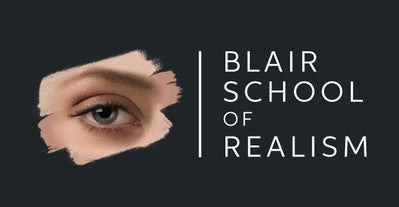The airbrush world is unique among all the other visual arts in that it generally emphasizes technique over content. It attracts individuals at the grassroots level, who often prefer skulls to figurative art and beach scenes on T-shirts to landscapes on canvas.
Is there anything wrong with that? Not at all. That is the world I came from.
But this choice of subject in airbrush art is what gives the fine art world hesitation in the acceptance of the airbrush within their ranks.
I say "public acceptance" because in reality, a LOT of fine artists use the airbrush. Only they don't broadcast the usage of it, perhaps because they don't want to be associated with the art normally ascribed to the airbrush.
Many great artists have utilized the airbrush: Salvadore Dali, Francis Bacon, H. R. Giger, Man Ray, Jackson Pollock, Alberto Vargas, George Petty, Andy Warhol, James Rosenquist, and Drew Struzan.
These artists saw the airbrush as a means to an end, not as an end unto itself, as many contemporary airbrush artists view their work. Many airbrush artists focus so much on technique, that they overlook the aesthetic of their paintings in favor of a display of technical abilities.
This is especially apparent in the "freehand only" group of airbrushers. Instead of pursuing a beautiful or meaningful painting, they constantly copy the work of other artists and photographers, while emphasizing that their work was created freehand, meaning without any masks or other tools, when displaying their work. Unfortunately, this focus on technique over substance comes at a price, resulting in poor sales and public acceptance.
I'm as guilty as the rest because my original goal had been to pursue technically-challenging subjects, while often missing the mark on simply making good paintings. However, spending time around fine artists allowed me to get back to my roots and realize that the airbrush was simply a tool to apply paint and that there is more to creating art than technical ability alone.
But then there's the subject
I have a friend who painted portraits of various women next to spiders in a web, which though symbolic, the image wasn't in the range of appealing subjects that people would be willing to patronize.
If you are interested in selling your work, you need to create subjects that people want to hang on their walls and look at every day. While an argument might be made for the beauty of spiders, they are not a subject that many people would elevate to casual everyday viewing.

People prefer to hang items on their walls that positively lift their spirits, so consider this when choosing a subject.
Customers don't usually buy a painting for its display of virtuosity and detail. They buy for three reasons: to enhance their decor, for investment purposes, and/or how it makes them feel. The first two are difficult for an artist to predict or control. However, an artist has complete control over the message they are sending by choosing the subject he or she paints and how it is presented.
Even though the four most popular subjects are landscapes, wildlife, abstract, and floral, the artist must present the subject in a way that makes it desirable and visually appealing if they are interested in selling their work.
Bottom line
If you find that you are running into opposition because of bias against the airbrush, consider omitting the description of the tool used, and instead define your work as an acrylic painting. Always consider the subject, and how you can present it most appealingly if you want to sell more paintings.




